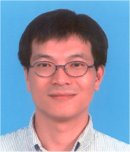|
Plenary
Lecture
Impulse Noise Removal with Polynomial Interpolators

Associate Professor Cheng-Hsiung Hsieh
Department of Computer Science and Information
Engineering
Chaoyang University of Technology
Taiwan
E-mail:
chhsieh@cyut.edu.tw
Abstract: This plenary speech presents an impulse
noise removal approach which employs boundary
discriminative noise detection with boundary resetting (BDNDBR)
and polynomial interpolators. In the proposed approach,
two stages are involved: noise detection and noise
replacement. The noise detection performed by the BDNDBR
is to identify a noisy pixel in an image. If a pixel is
noise-free, then keep it intact. Or replace it with
uncorrupted neighborhood pixels through the polynomial
interpolators. Note that miss detection happens in the
well-known BDND scheme when the noise density is high.
The miss detection is even worse for cases with
unbalanced noisy density where the portions for salt
noise and pepper noise are different. To avoid the miss
detection, a boundary resetting scheme is incorporated
into the BDND. By this doing, the problem of miss
detection in the BDND is prevented. In the noise
replacement stage, two polynomial interpolators are
adaptively selected to replace a noisy pixel according
to the noise density. In the cases with higher noise
density, a zero-order polynomial interpolator called
adaptive nearest neighbor interpolator (ANNI) is used
while a first-order polynomial interpolator called
adaptive linear interpolator (ALI) is employed for the
cases with lower noise density. Several examples are
provided to justify the proposed BDNDBR, ANNI, and ALI.
Moreover, the proposed noise removal approach is
compared with other reported approaches as well.
Brief Biography of the Speaker:
Cheng-Hsiung Hsieh received his B.S. degree in
Electronic Engineering from National Taiwan Institute of
Technology, Taiwan, in 1989. In 1995, he earned the M.S.
degree from the Department of Electrical Engineering of
Tennessee Technological University, USA. He obtained his
Ph.D. degree in Electrical Engineering from the
University of Texas at Arlington, USA, in 1997.
Currently, he is an associate professor at Department of
Computer Science and Information Engineering in Chaoyang
University of Technology, Taiwan. Since 1998, he has
developed several grey models and other schemes applied
to image, video, and speech signal processing. Those
studies have been published in journals and conferences.
Currently, his research interests are on image
restoration, image enhancement, image enlargement, error
concealment, and image/video coding.
|
